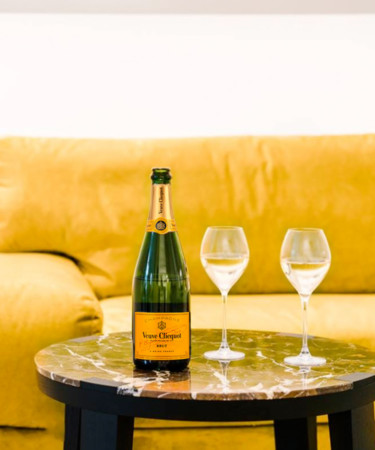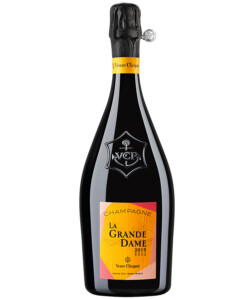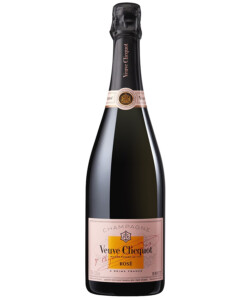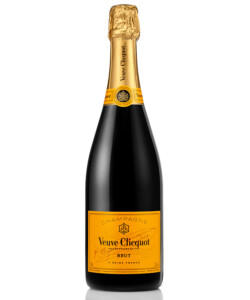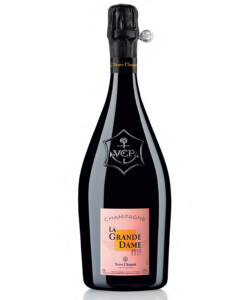The epitome of “accessible luxury,” Veuve Clicquot is sold in fine wine catalogs and liquor stores, and mentioned everywhere from James Bond novels, to “Downton Abbey,” to even the “Real Housewives” franchises. With its unmistakable yellow label, it is certainly one of the most well-known Champagnes on the market today. While sommeliers may scoff at the big-brand house, Champagne probably wouldn’t be what it is today without Veuve Clicquot. Its innovations in production, and persistence in garnering recognition for the region, give Veuve Clicquot great historical significance.
Think you know all there is to Veuve Clicquot? Here are 13 things that might surprise you.
Veuve Clicquot was founded over 200 years ago.
The Champagne house was founded by Phillippe Clicquot-Muiron in 1772. At the time, the company was involved with banking and wool trading in addition to Champagne production.
Veuve Clicquot translates to “Widow Clicquot,” named for the first woman to run a Champagne house.
Barbe-Nicole Ponsardin was the actual “Veuve Clicquot,” widowed at the age of 27, just seven years after marrying the company’s heir, François. Madame Clicquot was known for being strong-willed and innovative through her years at the house’s helm.
Veuve Clicquot created the first-ever vintage Champagne.
After five years of bad vintages, war, and near-failure, Madame Clicquot celebrated the success of 1810 with the first single-vintage Champagne. The concept became a huge success the following year, when the iconic 1811 vintage Champagne was labeled ‘The Year of the Comet.’
Veuve Clicquot invented the riddling rack, allowing Champagne to be mass-produced.
Created by Madame Clicquot and the house’s cellar master, the riddling rack (which looked more like a riddling table at that time) allowed a more efficient process of disgorgement for the final corking of Champagne bottles. It is still used by sparkling producers around the world.
Veuve Clicquot was one of the first producers of rosé Champagne.
Ruinart had already produced a rosé Champagne by tinting Champagne with elderberry juice, but Veuve Clicquot was the first to produce rosé Champagne by adding still red wine to its sparkling. First made in 1818, Veuve Clicquot Rosé is now made by adding Pinot Noir to the classic Yellow Label.
Veuve Clicquot’s signature yellow label has adorned the bottle for over 180 years.
The label started appearing on bottles around 1835 and was officially trademarked in 1877. It was created to distinguish “dry” bottles from the usual sweeter ones in the British market and became a huge hit.
Veuve Clicquot’s vineyard holdings are almost entirely comprised of Grand and Premier Crus.
Fifty-five percent of Veuve Clicquot’s vineyards are categorized as Grand Cru and 40 percent are Premier Cru.
Veuve Clicquot Champagnes are always Pinot Noir-dominant.
The house believes that Pinot Noir adds strength and structure to its wines.
The house’s prestige cuvée is ‘La Grande Dame.”
It was introduced in 1972 to celebrate Veuve Clicquot’s 200th anniversary.
Veuve Clicquot sells over 1.5 million cases of Champagne each year.
And 400,000 of those Veuve cases go to the United States. Compare that to one of Champagne’s “larger” grower-producers, Chartogne-Taillet, which produces just 6,500 cases of Champagne each year.
A bottle of nearly 200-year-old Veuve Clicquot purportedly broke the record for most expensive Champagne ever sold.
In 2011, a bidder paid €30,000 for a bottle of shipwrecked Veuve Clicquot found at the bottom of the Baltic Sea. It was estimated to have been made between 1825 and 1830.
Since 2008, Veuve Clicquot has hosted the celebrity-filled Veuve Clicquot Polo Classic in New York and Los Angeles.
Celebs like Kendall Jenner, Neil Patrick Harris, Nicole Kidman, Alicia Keys, and more can be spotted sipping on Veuve Clicquot Yellow Label throughout the match.
According to Queen Elizabeth II, Veuve Clicquot is fit for royals.
The wine holds a royal warrant of appointment in the United Kingdom, which means that it is officially approved to be served to the British Royal Family.
